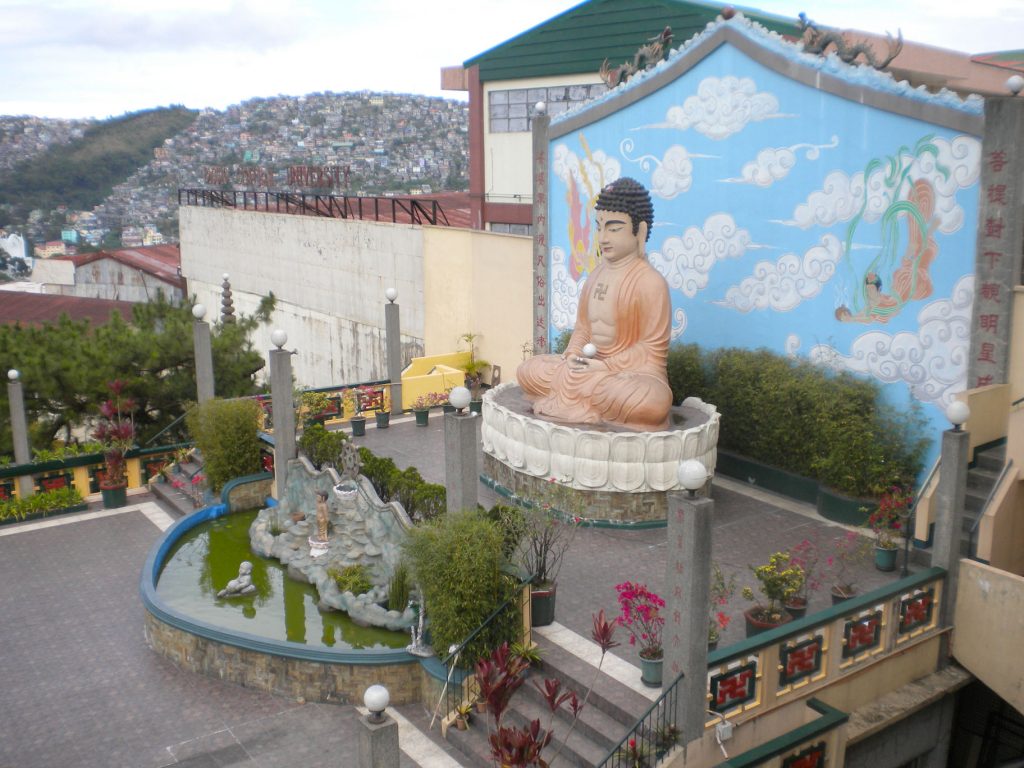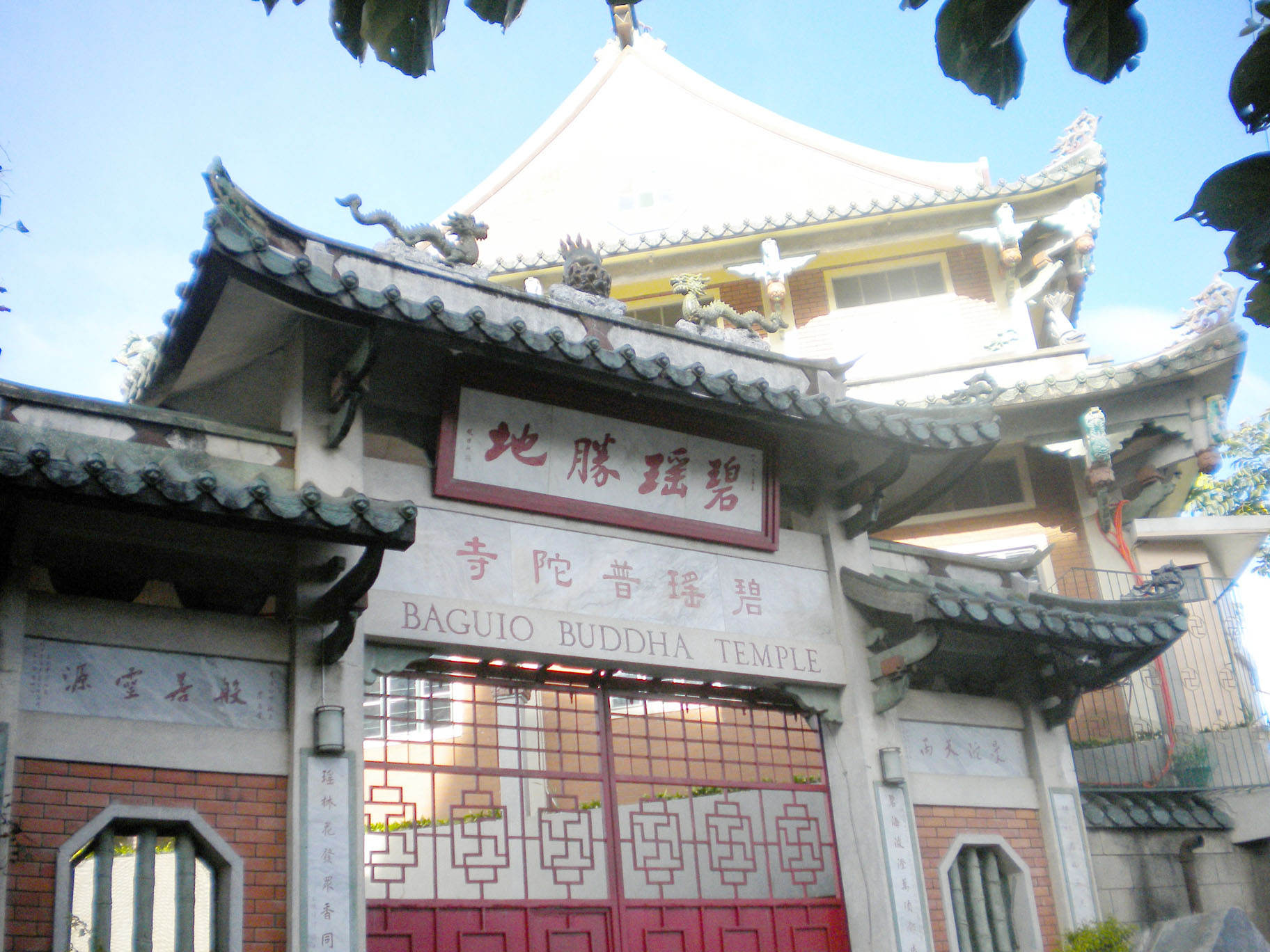Editors Note: This is the 15th of a series about the 36 Chinese Buddhist temples of the Philippines. Much of the information is from a thesis of Venerable Chuanmiao (Hsuan Chuang University, 2008), a Buddhist monk affiliated with the Thousand Buddha Temple in Quezon City.
15. Baguio Buddha Temple (碧瑤 普陀寺)
Assumption Road, Baguio City (near St. Louis University)
Tel.: (074) 619-2594
Baguio’s cool climate is very conducive to spiritual retreats, but for a long time, the city had no Buddhist temple where monastics and devotees could stay.
This prompted Ruman of Manila Buddha Temple to purchase land in 1967 and begin construction of a temple. The project took several years and opened in 1978.
While Ruman was the founder, his Dharma brother Ruyi was the first abbot. Both monks died in 1983. Since 1984, Manila and Baguio Buddha temples have had only one abbot heading both.
A strong earthquake in 1990 heavily damaged Baguio Buddha Temple, and reconstruction work took two years. Daoyuan has been in charge of this temple since 1996.
In 2001, he invited Hengzhi (恆智) – a Chinese-Filipino nun who had renounced and trained in California’s City of Ten Thousand Buddhas under Master Xuanhua (宣化) – to take charge of the temple’s daily affairs.
Since then, she has gradually improved facilities and rented out to student boarders rooms originally intended for retreats.
In the 1970s, Ruman created a Buddhist garden with a large statue of the Buddha in the city’s Burnham Park. However, the predominantly Catholic population reacted negatively to the project, and the large statue was brought to the temple grounds.
Main buildings. Like most buildings in Baguio, the temple is on a hill. It is a tight complex of three buildings, plus the small park with the Buddha statue. There are numerous bedrooms owing to the original vision of the place as a Buddhist retreat house. The main shrine is in the central building, and there are three Italian white marble statues of the Buddha flanked by the Bodhisattvas Manjusri and Samanthabhadra.

The ancestral hall and dining room is on a lower floor. Facing the main shrine, the building to the right has a hall with altars to Ksitigarbha, Guanyin, and Amitabha Buddha. A small chan meditation (坐禪) room with a statue of Bodhidharma crowns the building. To the left of the main shrine is a pagoda with cremated remains of Ruman and Ruyi.
Leadership and primary activities. There are no regular services here. People are free to come on any day for their devotions, but there are not too many devotees because for a long time there was no resident monastic.
After Ruyi’s death and until Hengzhi arrived as caretaker, the abbot of both temples has been based in Manila.
Once a year in late March or early April, a few busloads of devotees come from Manila to chant the thousand names of the Buddha. This lasts from one day to three.
Hengzhi has focused on finding resources to improve the quality of the building’s interiors. When this is finished and with rental income from student boarders, she hopes to initiate more activities to propagate Buddhism. She serves as a kind of chaplain or prefect to the student boarders, and has participated in interfaith activities at the nearby St. Louis University. — First published in Tulay Fortnightly, Chinese-Filipino Digest 25, no. 21 (April 9-22, 2013): 12.





